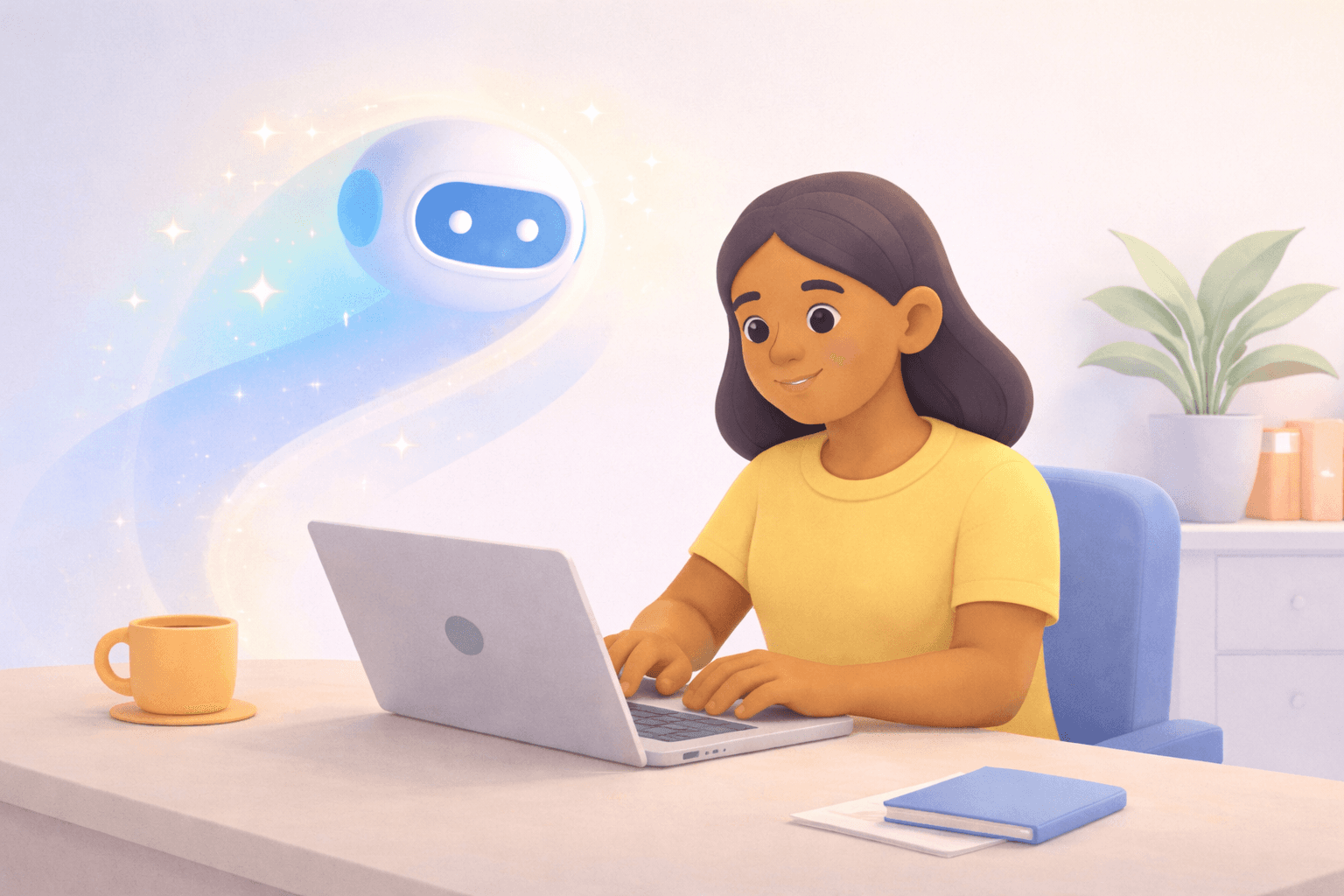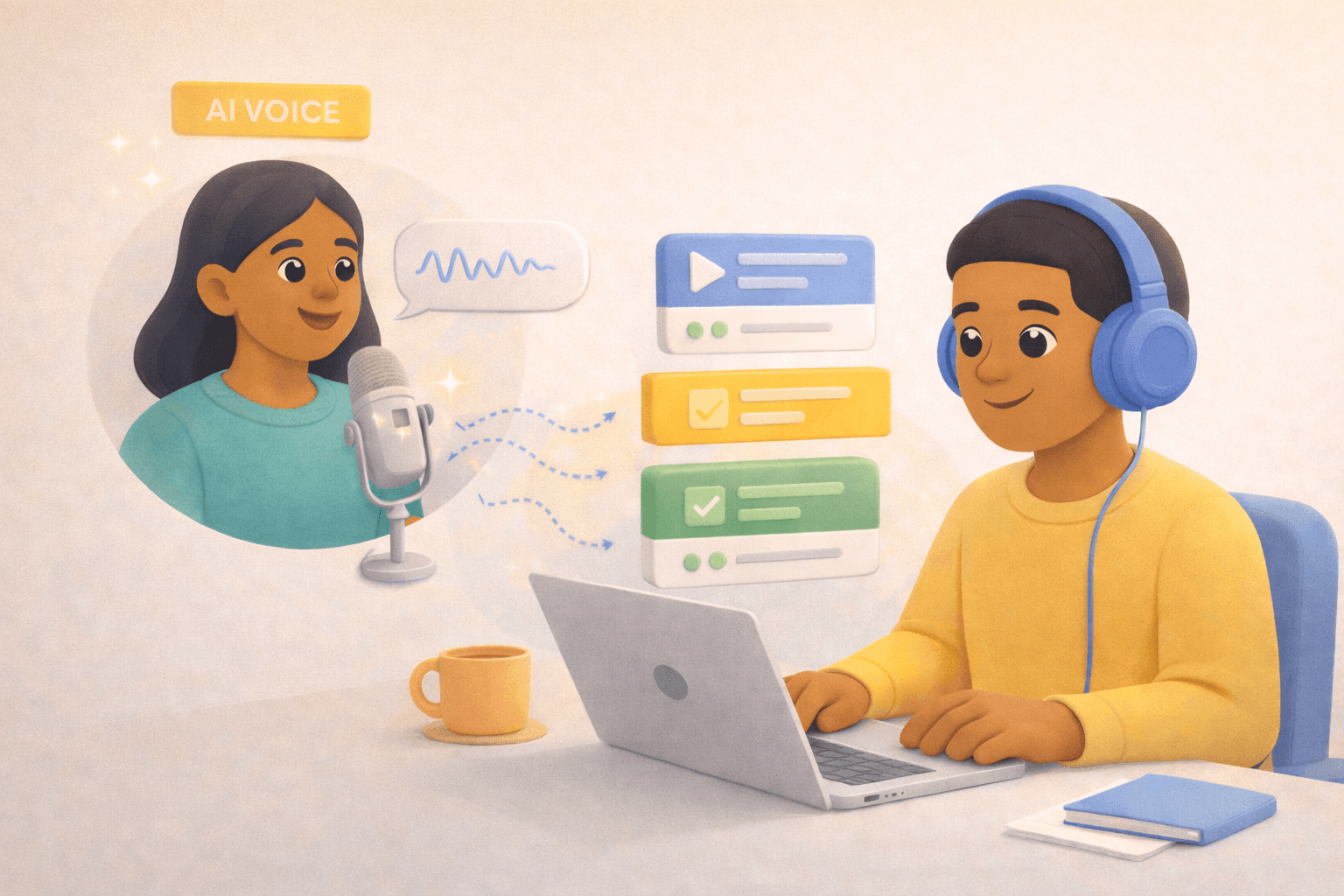Curating knowledge
Will AI replace instructional designers?
This is how AI streamlines course creation while human expertise ensures strategy, context, and creativity.

Ryan Macpherson
Sep 2, 2025



Editor:
Stephanie Chan
Nearly 95% of instructional designers use AI in their daily work, and over 85% rely on generative AI for creating content and designing learning experiences
But here’s the thing: AI won’t replace instructional designers. What it will do is change the work. Generative AI tools can draft AI-generated content, build quizzes, analyze learner engagement, and even translate into multiple languages. That frees learning professionals to focus on strategy, context, and human creativity.
In this article, we’ll explore:
What generative AI really does for instructional design
Where human instructional designers still win
Why the future belongs to those who learn to work alongside AI, not compete with it
What generative AI actually does for instructional design
Before AI, building a single course could take weeks. Instructional designers spent hours storyboarding, drafting assessments, aligning learning objectives, formatting slides, and waiting on SME approvals. Add expensive licenses for traditional authoring tools, and the process felt heavy before learners ever saw the first module.
Research now shows that AI can handle routine instructional design tasks with speed and quality.
In Dr. Philippa Hardman’s experiment, the objectives created by an instructional designer using AI assistance were rated best overall. It scored nearly three times higher than those written by an ID without AI.

Respondents praised the AI-assisted objectives for their clarity, measurable verbs, and consistent structure, showing how AI can raise the baseline quality of outputs while freeing designers to focus on strategy.
How AI tools transform course creation
The best instructional design AI collaboration today happens when tools convert existing knowledge into learning experiences.
A company PDF becomes an interactive course in minutes
Compliance policies turn into scenario-based learning with quizzes and instant feedback
Slide decks transform into online courses that track learner progress

This kind of AI-generated content removes weeks of manual work and keeps training accurate without costly delays.
With Coassemble’s AI Create, teams can convert existing docs into branded, trackable learning experiences quickly, freeing instructional designers to focus on more important design decisions.
AI can personalize learning

Personalized learning used to mean complex data models or specialist support. Now, AI-powered tools make it simple. Designers can adapt tone, add localized examples, or deliver personalized learning experiences without diving into research papers or coding. It’s smarter content – without slowing the process.
Learn how AI can help you break content into bite-sized, engaging formats in our guide to creating microlearning courses with AI.
Analytics that actually help
Traditional systems show completions. AI-powered learning design goes further.

Instructional designers can now see where learners interact most, spot drop-off points, and suggest improvements that lead to more impactful learning experiences. With Coassemble’s dashboards, data analysis becomes actionable and helps teams iterate and improve in real time.
Where human instructional designers still win
AI can generate content quickly, but it can’t replace the deep, contextual insight that instructional designers bring to the table. Speed and structure are valuable, but they don’t equal relevance.
Understanding your learners’ reality
Imagine a SaaS company rolling out a new security feature. An AI tool can take the release notes and generate a training outline. On paper, it looks complete: bullet points, quizzes, even suggested modules. But what’s missing is the reality of how employees will actually use this feature.
An instructional designer knows to go further:
Translate technical release notes into plain, learner-friendly language
Create scenario-based learning where support agents handle realistic customer objections
Align learning objectives with business outcomes, such as reducing support tickets or improving customer trust
Design practice opportunities that reflect how learners interact with the product in high-pressure environments
This is where human oversight transforms AI-generated drafts into impactful learning experiences.
Creative problem-solving for complex challenges
Generative AI can suggest activities, but it can’t choose the right instructional strategy for the context. An ID might decide to use scenario-based simulations, guided practice, or peer discussions depending on the challenge. These decisions require strategic thinking that connects design choices to measurable outcomes.
Keeping training on brand and credible
Research shows the best outcomes come when instructional designers use AI as a collaborator, not a replacement. In Hardman’s earlier study, objectives written with AI support were rated nearly three times higher than those written without AI.
The lesson: quality comes from combining AI’s speed with a designer’s expertise.
With Coassemble, instructional designers can ensure this balance. A static compliance PDF becomes a branded course that managers actually complete. A dense sales playbook is refined into a structured training path that reps return to before calls. Onboarding guides evolve into step-by-step walkthroughs that reflect the company culture from the very first click.
Trust, context, and creativity are human strengths. AI can draft, but only designers can make learning meaningful.
Conclusion: your knowledge in motion
So, will AI replace instructional designers? The evidence says no. What AI will do is reshape the process. Routine tasks like drafting content, generating quizzes, and analyzing learner data can now be handled in minutes instead of weeks.
But speed is not the full story. Only instructional designers can design learning objectives that connect to strategy, apply human oversight to AI-generated drafts, and ensure training feels authentic to a company’s culture. Research confirms it: the highest-quality outputs come when human expertise and AI work together.
This is the big shift – collaboration, not replacement. Instructional designers who learn how to use AI unlock a new era of personalized learning experiences, smarter analytics, and faster course creation.
And this is where Coassemble fits in. It doesn’t replace your LMS or your team. It plugs into your existing systems as an AI-powered knowledge transfer platform. It’s the practical bridge between generative AI and human design, helping instructional designers move knowledge faster, clearer, and with more impact.
Your knowledge doesn’t have to stay static. With the right tools, it becomes knowledge in motion.
FAQs about whether AI will replace instructional designers
Will AI completely replace instructional designers?
No. AI-generated content still needs human oversight. AI handles repetitive tasks, but human instructional designers bring strategy, culture, and creativity that can’t be automated.
How will AI change my day-to-day work as a Learning Designer?
AI-powered tools can reduce time-consuming work like drafting courses, generating quizzes, and analyzing learner progress. That gives learning professionals more space to focus on designing impactful learning experiences.
Can AI create high-quality courses without human input?
AI tools can generate a first draft, but without human creativity and context, the result is generic. The best instructional design AI collaboration comes from blending AI efficiency with human judgment.
How do I know if an AI tool is right for my team?
Look for course creation tools that fit your workflow, integrate with your LMS, and protect data security. Tools like Coassemble let you translate content, personalize training, and track learner engagement without adding complexity.
What’s the difference between AI course creators and traditional authoring tools?
Traditional authoring tools are manual and often time-consuming. AI-powered course creation tools automate repetitive tasks and provide analytics, making it easier to adapt and create engaging online courses quickly.
Read More
Join the knowledge revolution today
Unlock knowledge. Boost engagement. Drive results
No credit card required

Join the knowledge revolution today
Unlock knowledge. Boost engagement. Drive results
No credit card required

Join the knowledge revolution today
Unlock knowledge. Boost engagement. Drive results
No credit card required




